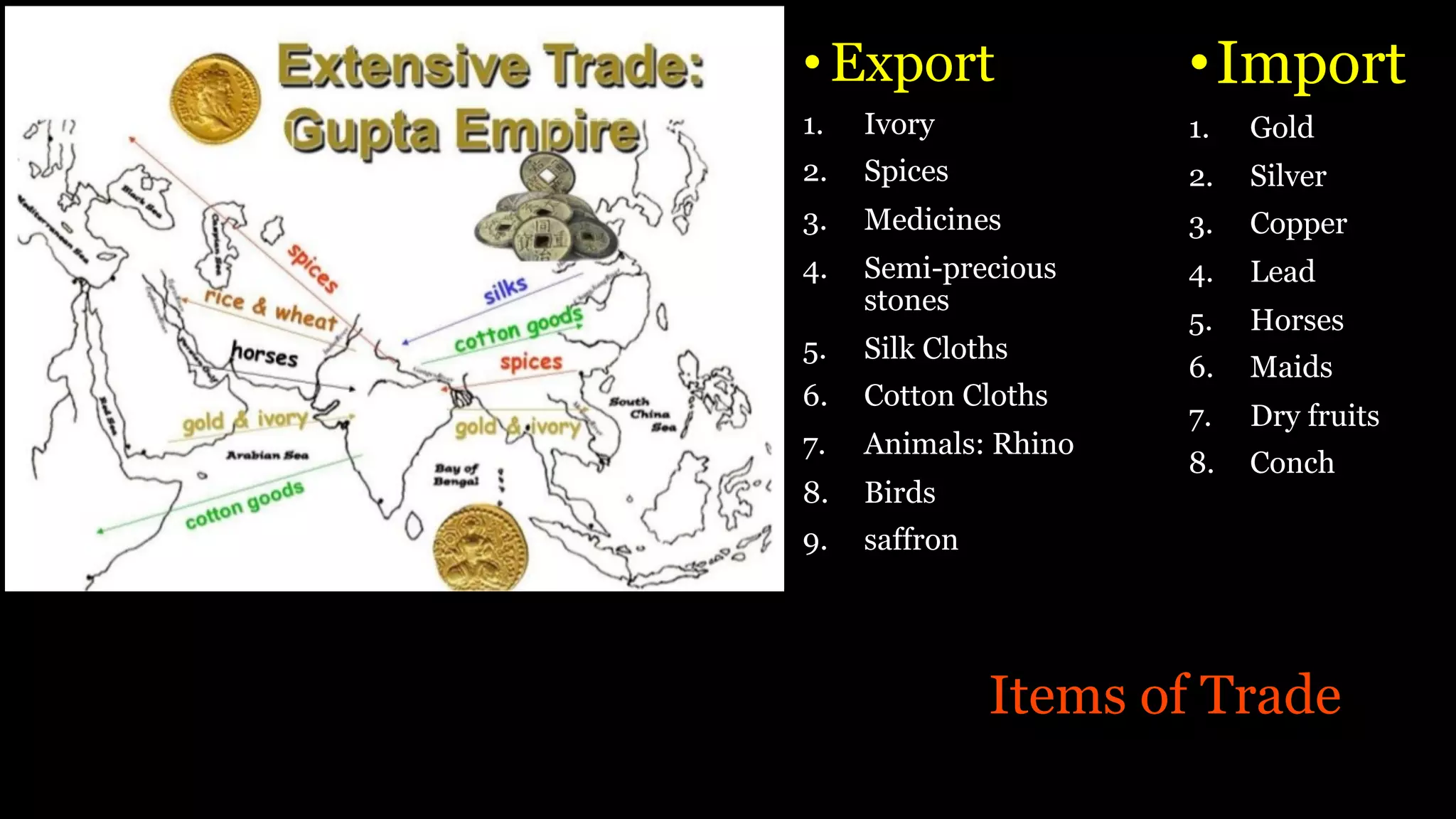The Gupta period, often seen as a golden age of India, followed the Mauryan era and was characterized by significant economic progress, cultural advancements, and a strong emphasis on agriculture, trade, and craftsmanship. Innovations in agricultural practices and irrigation systems supported increased production, while the flourishing metal and textile industries reflected advancements in manufacturing and trade relations with various regions. However, the condition of ordinary farmers worsened due to increased taxation and labor demands, highlighting socioeconomic challenges despite overall economic growth.















































